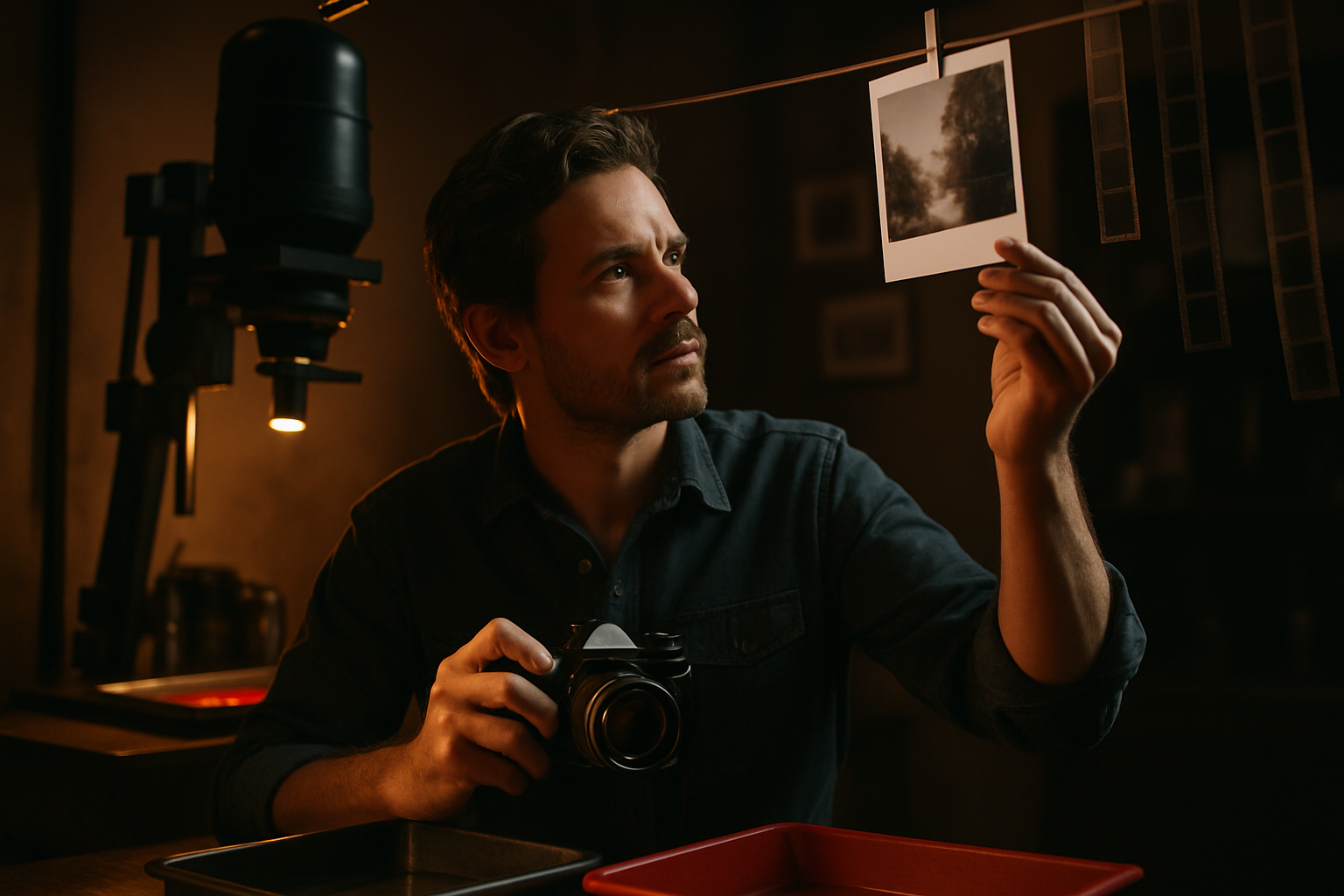The Resurgence of Analog Photography in the Digital Age
In an era dominated by digital technology, a surprising trend has emerged in the world of photography. Analog photography, once thought to be obsolete, is experiencing a remarkable revival. This resurgence has captivated both seasoned professionals and young enthusiasts, sparking a renewed interest in the tangible and tactile aspects of image-making. As we delve into this phenomenon, we'll explore the reasons behind its popularity, the impact on the photography industry, and the unique aesthetic that continues to draw people to film.

A New Generation Discovers Analog
Surprisingly, it’s not just nostalgic veterans driving this trend. A new generation of photographers, raised on smartphones and Instagram filters, is embracing film with enthusiasm. For many young artists, analog photography represents a form of rebellion against the oversaturation of digital images. The limitations of film – finite exposures, lack of immediate feedback – are viewed as creative challenges rather than drawbacks. This shift in perspective has led to a surge in film camera sales and a revival of darkroom techniques in art schools and community centers.
The Aesthetic Appeal of Imperfection
One of the key factors in analog’s resurgence is its distinctive aesthetic. Film photographs possess a unique quality – grain, color shifts, light leaks – that digital cameras struggle to replicate authentically. These imperfections, once seen as flaws, are now celebrated as part of the medium’s charm. The warm tones of color film and the rich blacks of monochrome images offer a visual experience that many find more emotionally resonant than the clinical precision of digital sensors. This aesthetic has influenced not only photography but also cinematography, with many filmmakers choosing to shoot on film for its textural qualities.
Impact on the Photography Industry
The revival of analog photography has had a significant impact on the industry. Film manufacturers, once on the brink of extinction, have seen a resurgence in demand. Kodak, Fujifilm, and smaller specialty companies have reintroduced discontinued film stocks and even developed new ones. Camera manufacturers have responded by reissuing classic models and developing new analog cameras. This renaissance has also sparked a thriving secondary market for vintage equipment, with prices for sought-after film cameras and lenses soaring.
Bridging the Gap: Analog-Digital Hybrid Workflows
While purists may advocate for a fully analog process, many photographers are finding ways to blend the old with the new. Hybrid workflows, where film negatives are scanned and processed digitally, have become increasingly popular. This approach allows photographers to enjoy the unique characteristics of film while leveraging the convenience and flexibility of digital post-processing. The result is a best-of-both-worlds scenario that has helped to make analog photography more accessible and relevant in the modern era.
The Environmental Consideration
As awareness of environmental issues grows, the sustainability of analog photography has come under scrutiny. The chemical processes involved in film development and printing can have ecological impacts. However, proponents argue that the longevity of film cameras and the more thoughtful approach to image-making can offset these concerns. Many photographers are exploring eco-friendly developing methods and archival processes to address these issues, demonstrating that analog photography can adapt to contemporary environmental consciousness.
The Future of Analog in a Digital World
As we look to the future, it’s clear that analog photography has secured its place alongside digital imaging. Rather than competing, the two mediums are increasingly seen as complementary, each offering unique strengths and creative possibilities. The resurgence of film has prompted a reevaluation of what photography means in the 21st century, encouraging a more thoughtful and deliberate approach to image-making. As long as there are artists seeking to connect with the physical process of creating images, analog photography will continue to thrive, evolve, and inspire new generations of photographers.





